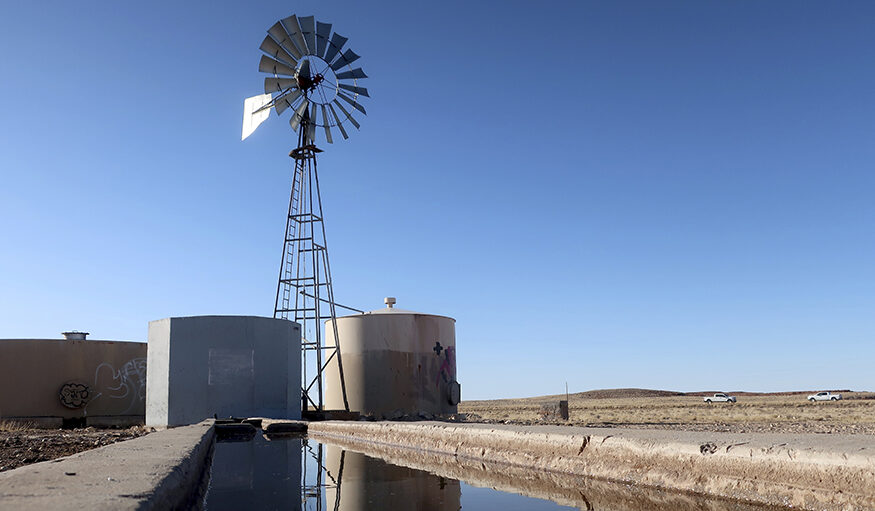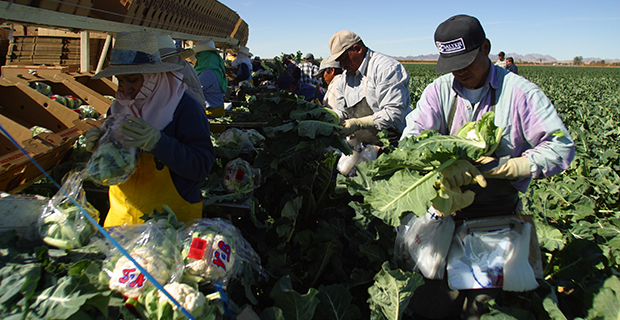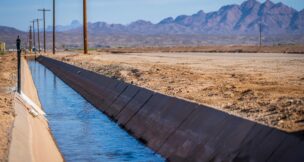Efficiency from all 7 basin states is the path forward
Mike Wade, Guest Commentary//October 3, 2025//
Efficiency from all 7 basin states is the path forward
Mike Wade, Guest Commentary//October 3, 2025//
The Colorado River Basin was inhabited by indigenous people for thousands of years, using its water resources for farming and to support their communities. The river serves many more people today, thanks to modern engineering and water supply projects in all seven Basin States from Wyoming to California.
Today, Colorado River supplies are running short, and a solution seems elusive because some water users are fighting for control over someone else’s share of the river instead of seeking local solutions to their own water needs.
Colorado resident Jason Shulman wrote a recent piece for the Arizona Capitol Times in which he implied solving the Colorado River crisis could be achieved by maximizing efficiency on farms in California’s Imperial Valley, over 750 miles from his home.
Farmland across the West is already on the decline — lost due to water shortages and swallowed up by urban sprawl. Efforts to take even more water from California farms to meet the demands in other states only makes matters worse. The Imperial Valley relies exclusively on water from the Colorado River to meet its needs. There are no alternatives.
Arizona and Southern California are seeing more and more farmland lost to urbanization every year, with Maricopa County leading the nation in farmland loss, according to the American Farmland Trust.
In the Imperial Valley, efforts have been underway for over 30 years to conserve Colorado River water. The Imperial Irrigation District has been administering a variety of effective water conservation programs as a result of collaborative intrastate partnerships.
While we appreciate Mr. Shulman’s recognition of IID’s conservation successes, his focus is more appropriately aimed at his home state of Colorado and other Upper Basin States, including Wyoming, Utah, and New Mexico. They have yet to step up in the effort to help craft a basin-wide solution, while California, Arizona, and Nevada have offered 1.25 million acre-feet per year in annual reductions.
Real progress is achievable if local water users look toward regional self-sufficiency instead of clamoring for water supplies that are needed to meet economic and social needs in other states.
A newly released report in the Journal of the American Water Resources Association examined the value of conservation investments throughout the Colorado River Basin. The report explains that conservation programs are usually less expensive than building new water supply infrastructure. Included was the cost per ace-foot for conservation in each of the seven Basin States.
Table 13 of the report shows that the lowest cost for conservation is in Colorado, at $285.90 per acre-foot. California spends $695.58 for the same acre-foot of conserved water, while Nevada is a whopping $3,860.84.
By the end of 2026, IID and other farm and urban water suppliers in California will have saved more than 1.7 million acre-feet of water to add at least 27 feet of elevation to Lake Mead. This is all part of the Lower Basin’s plan that is anticipated to conserve 3.7 million acre-feet by the end of next year. California has already reduced its demand on the Colorado River by 20% per year over the last several years. Since 2003, IID alone has conserved more than 9 million acre-feet of Colorado River water.
Imperial Valley farmers use water to grow a variety of crops, including winter vegetables, citrus, and alfalfa, a foundational crop. The big beef other states have is that many Imperial Valley farmers use their share of the Colorado River to grow alfalfa, but so do growers in these same Basin States.
Critics should instead focus on the kinds of things that are made possible by growing alfalfa. Mr. Shulman says people often “frame the problem as food vs. alfalfa,” but alfalfa is a big part of the food chain that brings us high-protein milk, cheese, yogurt, and other dairy and beef products many people enjoy.
The water that farmers use doesn’t stay on the farm — it returns in the food we buy at the grocery store. That food feeds not just millions of people in the Southwest but tens of millions more across the country. Urban conservation is critical. So is ensuring that farms have the water they need to grow food for the rest of us. Failing to prioritize food production is a recipe for disaster.
Our hope is that the future of the river will not depend on finger-pointing, but on practical, measurable solutions that protect both farmers and families. Efficiency from all seven Basin States is the path forward.
Mike Wade is executive director of the California Farm Water Coalition.














































